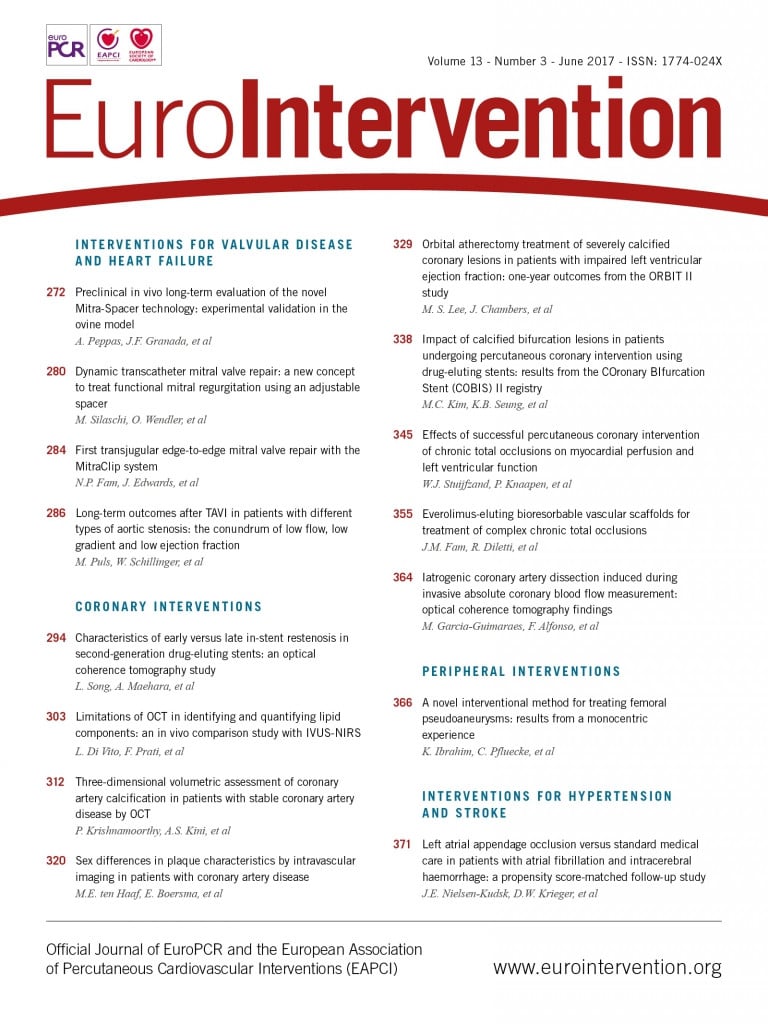
Cardiovascular diseases (CVD) account for nearly 25% of deaths between the ages of 25 and 70 years in India. Large prospective studies have shown age-standardised CVD mortality rates of up to 225-500 per 100,000 in men and 225-399 per 100,000 in women. These figures appear to be an underestimation given that a large number still remain undetected1. The number of interventional cardiologists in the country is estimated to be three to five per million population, in contrast to 50 to 70 per million population in the USA. The number of cardiac catheterisation laboratories in India was estimated to be around 960 in 2016. Keeping the burden of disease in mind, the facilities and infrastructure for invasive treatment modalities in India are inadequate.
Despite these shortcomings, the number of percutaneous coronary interventions (PCI) performed is increasing steadily at an annual growth rate of 6%. The total number of PCI procedures carried out in 2016 was 495,000 with an estimated number of 594,000 stents used (1.20 per procedure). Of the stents implanted, 80% were drug-eluting stents (DES) with over 60% of these being manufactured by multinational companies. These companies typically go through a supply chain mechanism controlled by the distributors who manage the procurement and storage, and also keep them in hospitals as a consignment. The stents are billed to the hospitals as per the usage. The hospitals then add their profit share and bill the patients accordingly. This leads to a big gap between the buying price and the selling price to the patient, especially in privately owned and corporate hospitals, leading to a large escalation in the final price to the patient. The average retail price for a bare metal stent (BMS) used to be INR 45,000 (670 USD) while DES were priced at around INR 120,000 (1,800 USD), generating profit margins that ranged from 270% to 1,000%.
In the absence of an organised insurance system, and barring six out of 26 states and some central government health schemes, up to 40% of patients pay out of their own pockets for their medical expenses and that includes coronary stents. Nobody seriously challenged this practice until recently when a lawyer from New Delhi who had to pay for the PCI treatment of his father noted this exorbitant pricing and took up the case with the judiciary and the government. The case forced the authorities to list the stents in the National List of Essential Medicines (NLEM) in 2016 and, later that year, stents were included in the first Schedule of the Drug Prices Control Order. Finally, in February 2017, after the economics of the prevailing supply chain system had been studied, the prices of stents were capped at INR 7,260 (110 USD) for BMS, and INR 29,600 (440 USD) for DES. This pricing is being strictly enforced. The suppliers have been barred from taking back stocks. This ruling has resulted in a vigorous debate in the country. The political party in power is taking credit for this move – credit which should actually go to the lawyer who championed this issue and followed it up until the notification came through.
There is no doubt that the patients requiring stent implantation will benefit vastly, even more so those paying out of their own pockets. With multivessel stenting becoming cheaper, more patients can afford multivessel PCI with complete revascularisation, which has typically been more expensive when compared with coronary artery bypass grafting (CABG). There is little doubt that, with the shrinking profit margins on the stents, the hospital management will invariably hike up the cost of the procedure to compensate, thus neutralising the benefits intended to be passed on to the patients. Adding to the issue, the reuse of hardware (guiding catheters, balloons and guidewires), which was a common practice in India, has also been stopped recently. This will add to the woes of the hospitals, especially the privately run ones.
The multinational companies, which have around a 60% share of the market, are planning not to bring in the new-generation products in future. This move may affect the outcomes of procedures in times to come and deprive the operators of the benefits of newer-generation stents, especially in complex lesions. Another problem which can be foreseen is the drastic cut in funding from the big companies for academic activities. These consist of live demonstration courses, industry grants for investigator-sponsored studies and sponsoring cardiologists for attending international and national meetings. This practice has been widely prevalent despite the Medical Council of India’s rulings in the last few years.
One positive effect of this pricing cap is likely to be an increase in the use of indigenously manufactured stents which currently have a market share of less than 40%. There are at least three Indian companies which have a substantial share of this. It is therefore time for these companies to prove to the cardiologists and the patients the equivalent safety and efficacy of their products when compared with products from multinational companies that would have undergone vigorous testing in adequately powered clinical trials. There is a perception in the minds of cardiologists, which gets passed on to the patients, that imported stents are superior. There should be a mandate on the Indian companies to show that their product is non-inferior to other proven stents by sponsoring studies in order to have outcome data in registries and randomised trials with adequate numbers and publications in peer-reviewed journals. Special emphasis needs to be placed on diabetic patients who constitute around one third of the total PCI population in our country. We have the experience and expertise of conducting and publishing such studies2-4. Currently there is a study in progress, TALENT, comparing an Indian DES with the international bestselling cobalt-chromium fluoropolymer everolimus-eluting stent (XIENCE; Abbott Vascular, Santa Clara, CA, USA) in an all-comers population5. Finally, India, with a growing market and a huge magnitude of ischaemic heart disease, cannot be neglected by the multinational companies which are facing a shrinking market in the industrialised world. A way will be found by them as per the doctrine of “survival of the fittest”.
Conflict of interest statement
The author has no conflicts of interest to declare.

